
by Mark Smiley | May 27, 2016 | General Featured
Major Change To Virginia Village Neighborhood If Sold
by Megan Carthel
 Some big changes may be on the way for the intersection at Arkansas and Colorado Boulevard.
Some big changes may be on the way for the intersection at Arkansas and Colorado Boulevard.
Currently, the Denver headquarters for the Colorado Department of Transportation (CDOT) offices are housed in the residential area. In an old 1955 building over 500 state employees walk the halls every day. Spokesperson for CDOT Amy Ford says mice and asbestos are issues in the current building, along with toilets fitted for elementary students, not adults.
The carpets are a faded blue and tan and green tiles lead visitors and staff through the hallways. Not everything is outdated though. Computers, large TV screens and seemingly nice, modern chairs accommodate employees with their everyday tasks. However, by as soon as early 2018, these state employees could have a new office. David Fox, property management deputy program manager, said moving locations and building a new office is a good business decision.
“I think with every business decision, there’s some idea of ‘let’s get more efficient,’” Fox said. “We can do a lot more things with amenity spaces to make things nicer for employees, but yet get more efficient with our building footprint.”
In May 2013, CDOT completed a building evaluation of four campuses, the Denver HQ, Region Four HQ, Region Two HQ and Old Aurora R1 HQ. The Region Four HQ in Greeley was recently rebuilt and relocated. The $9.9 million offices opened in November 2015.
The plan is to combine both the CDOT headquarters on Arkansas and the Region One office on South Holly. The new building design has a target of 200 square feet per employee, aimed to house around 700 employees, that’s nearly 100 square feet less per employee than the current situation. While nothing is set in stone yet, the numbers CDOT is currently working with, estimate the total cost of building a new office space at a different location at over $44 million.
“It is a class B building that we will be doing,” Ford said. “And when I say class B, this is not the Taj Mahal. This is not designed to be a monument to state employees. This is designed to be a working building where we can most effectively attract and retain our employees and do very good work.”
Ford said the funding for the project comes from a capital budget to maintain assets, which has $20 million annual, state-wide budget. CDOT would also be issuing bonds against that budget to help pay for the new building.
“This is money that would not go to fixing your pot hole or that kind of thing. This is money that’s already dedicated to keeping these assets up,” Ford said.
The other option for CDOT is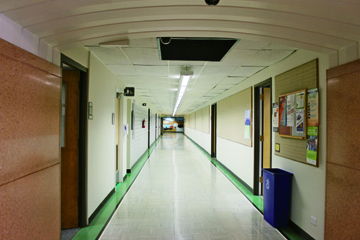 to renovate the existing building. According to a financial comparison analysis conducted by CDOT and Jones Lang LaSalle in 2014, the total cost for renovation would be just over $16 million. The same analysis showed the total net cost over a 20-year period to renovate and maintain the Arkansas location would cost around $56 million.
to renovate the existing building. According to a financial comparison analysis conducted by CDOT and Jones Lang LaSalle in 2014, the total cost for renovation would be just over $16 million. The same analysis showed the total net cost over a 20-year period to renovate and maintain the Arkansas location would cost around $56 million.
“We strongly believe that, ‘A,’ it’s a good business decision,” Ford said. “‘B,’ that it benefits our capacity to deliver more for the state.”
Fox and Ford said the ideal location for the new office would be within five miles of the State Capitol, visible to the traveling public and near light rail, bus and bike transportation. According to the analysis done in 2014, some potential relocation sites include the Federal Center Station, Decatur and Federal Station and I-25 and Broadway. Ford said the final location selection has not been decided, and that CDOT is keeping that information “close to the chest.”
“We’re not done yet by any stretch,” Ford said. “Nor is it a sure thing we are moving.”
For the new building to be approved, CDOT must present their guaranteed maximum price, what the land can be sold for and the price estimate to build a new office, to the Transportation Commission. The commission will hear CDOT’s case and make the final assessment later this summer. According to Transportation Commissioner District 1 Representative Shannon Gifford CDOT is negotiating with the owners of more than one possible site. The location is expected to be finalized in June. Gifford seems to be in favor of the relocation project.
“The new building is projected to save CDOT $6 million over a 20-year analysis period when compared with updating existing buildings that are past their useful life,” Gifford said. “The savings are attributable to multiple factors, including more efficient plans (reducing the gross square feet per employee); reducing the total number of buildings; using more efficient mechanical systems, windows, and insulation; and, selling 20 acres of land while acquiring only approximately three acres.”
So what would happen to the current site if it’s sold? CDOT is working with Jones Lang LaSalle, a brokerage firm, to sell the property estimated at just over $11 million according to the 2014 memorandum. Jones Lang LaSalle had no comment when the Chronicle reached out to the firm. Fox, however, said developers were interested in the land before talks about a relocation began back in 2011.
The Arkansas site is currently zoned as a CMP-EI2, or campus, educational/institutional site. This zoning allows a maximum height of 150 feet, but any part of the site within 175 feet of a protected area, usually single family homes, is limited to 75 feet. Residential, educational use and office space are allowed. The 1.16-acre parcel of land closest to Colorado Boulevard, is zoned as a S-MX-5 area, allowing for mixed use facilities and up to five stories. The communications tower that sits on the property would remain on site as it is owned by the Governor’s Office of Information Technology, and would not be sold as part of the CDOT space.
As for the Region One office site, the location is zoned as a MX-3 site. This allows buildings as high as three stories or 45 feet, and can be used in a variety of ways from single family or multi-unit housing, community centers, daycares, open space, schools, restaurants and retail, hotels and more. Of course the Denver Planning Board and certain members of the Denver City Council have proven they are happily willing to rezone properties for powerful developers with high powered lobbyists.
Paul Kashmann, the City Councilman for District 6 where the present facility is located, said if the properties were redeveloped, he would like to see the spaces used for residential developments or green space.
“I would love to see affordable residential be a part of the package on both sites. The surrounding communities have not yet gentrified, and I’d like whatever comes to support, rather than degrade the affordability of the community,” Kashmann said. “I’d love to see some additional green space. Mainly I’d hope the Arkansas development would not add big congestion to the already crowded Colorado Boulevard corridor, and I’d love for the South Holly Street site to complement both South Holly Street’s commercial opportunities as well as East Evans Avenue.”
Some residents near the Arkansas property oppose the redevelopment as worries over traffic congestion, noise and construction might disrupt their relatively quiet neighborhood.
Skylar Ocheltree and Kristen Kinnaird live together in a house across the street from the current CDOT headquarters. While they don’t mind the current building situation, they fear another large building would be put in place, bringing more traffic and congestion. Their neighbor a few houses down and closer to the building, Blake Crawford, feels just about the same, unless something can add property value to his house.
“Any additional [infrastructure], unless it raised the value of my house, is non-beneficial,” Crawford said.
Kashmann hopes to work with his constituents to determine what could go in the space of the current CDOT headquarters if the land is sold.
“Mainly folks are anxious to know what will go in on the property and are anxious to have a voice in determining the impacts on their neighborhood from whatever development does go into these large parcels. I want the community to have real impact on crafting the eventual outcome,” Kashmann said. “It would be my goal to involve the community as much as possible in future redevelopment on these sites. Whatever projects end up taking place will have some degree of impact on the community. Building in an urban environment cannot be hermetically sealed. But, as we do on a near daily basis, we will work with builders and developers to minimize the impacts as much as possible.”
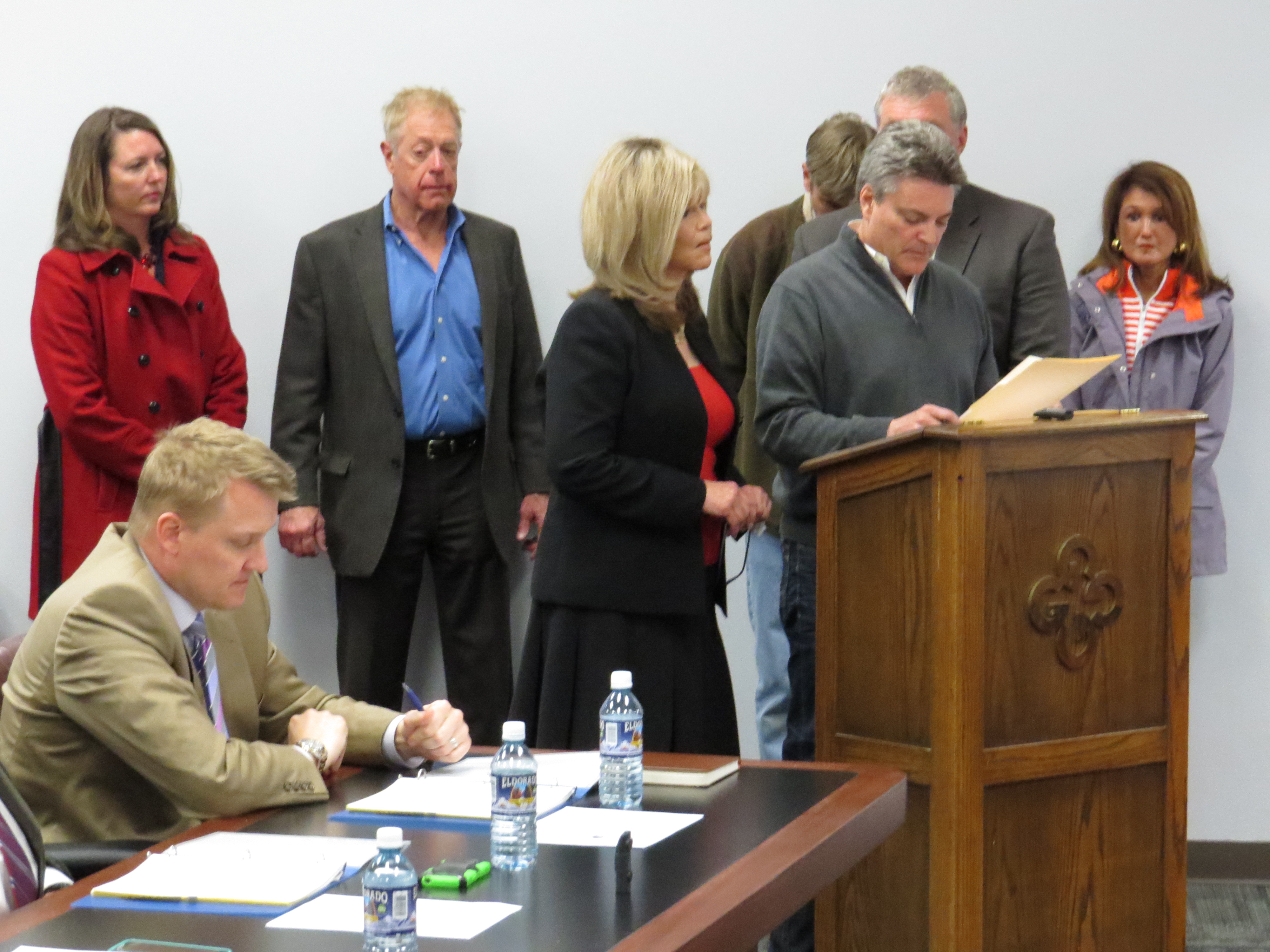
by Mark Smiley | Apr 25, 2016 | Main Articles
Glendale Chamber Formally Condemns Kheirkhahi And Authentic Persian Rugs
Wealthy Rug Merchants Turn On Dana Crawford
by Mark Smiley
The new Glendale City Council at its first regular meeting was met with an incredible outpouring of community opposition, from Glendale, Denver and even suburban towns, to Mohammad Ali Kheirkhahi and his M.A.K. Investment Group, LLC’s massive proposed condominium high-rise known locally as the Tehranian Death Star along Colorado Boulevard.
Chamber Resolution
The Greater Glendale Chamber of Commerce announced that a formal resolution unanimously passed (with one abstention) opposing “the efforts of M.A.K. to impose residential units in the Glendale entertainment district in conflict with the city’s zoning and Master Plan.” The resolution went on to “repudiate and denounce the efforts of M.A.K. and its principal Mohammad Ali Kheirkhahi to intimidate Council members and Glendale’s minority community by utilizing para military hate groups such a s the Oath Keepers as well as attempting to graymail the Council with negative publicity concerning the city and its residents.” For the complete resolution please see page 24.
s the Oath Keepers as well as attempting to graymail the Council with negative publicity concerning the city and its residents.” For the complete resolution please see page 24.
Denver Neighborhoods And Tower Of Doom
President of the Chamber Barret O’Brien stated that the “business community is simply sick and tired of how Kheirkhahi and his family are attempting to destroy the city’s 
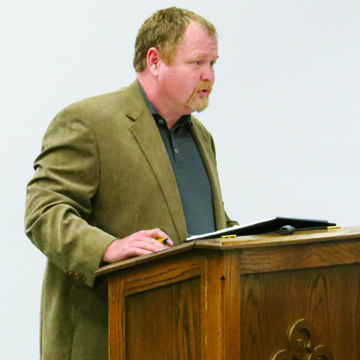 entertainment district for their own greed. They have personally offended just about everybody in town. They apparently believe that if they are vicious enough and trash the town enough they can get what they want. It is time for local businesses to stand with unintimidated residents and take on these bullies.”
entertainment district for their own greed. They have personally offended just about everybody in town. They apparently believe that if they are vicious enough and trash the town enough they can get what they want. It is time for local businesses to stand with unintimidated residents and take on these bullies.”
Among those addressing the City Council was the President of the Virginia Vale Community Association Paul Aceto who spoke of concerns of traffic that the Death Star would inevitably occasion. A letter from Jeff Mauck as President of the Belcaro Park Homeowners Association was read opposing the Death Star project indicating it would be a disaster for southeast Denver. Bonnie Brae area resident Linda Young noted her strong opposition to the project as a traffic nightmare for the area.
Former Glendale City Councilman Dan Van Winkle helped lead a group of Glendale residents to address the Council in opposition to what they called the “Tower of Doom” in reference to the Lord of the Rings books and movies. He noted a variance is a little less green space or a couple less parking places and not a wholesale destruction of the city zoning codes and Master Plan as proposed by M.A.K.
Key Speech
In perhaps the most rousing speech of the night, Kristina Beacom from the Phenix Infinity Park residential complex in Glendale, declared: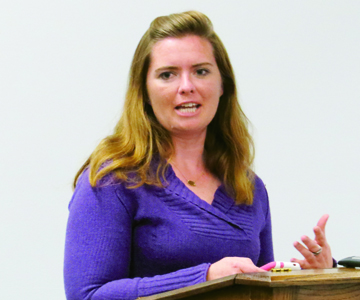
“The wealthy rug shop owners have attempted to play a very devious and shameful game in the court of public opinion. The transcript of their most recent meeting has exposed them for what they are — shamelessly opportunistic in every way. I urge the Mayor and council to continue the good fight against some very bad people!”
Her remarks were met with warm approval from almost everyone in the crowded City Council Chambers
Wealthy Rug Merchants Respond
Even though Mohammad Ali Kheirkhahi attended the City Council meeting, he spoke through front women Nasrin Kholghy, his sister-in-law, and Jeanne Price. Kholghy appeared to repudiate and disclaim developer Dana Crawford who she said was the person who called the pre-site meeting and Authentic Persian and Oriental Rugs could not be held responsible for anything she might have said.
Deputy City Manager Chuck Line later indicated such a disclaimer was preposterous as Kheirkhahi and Kholghy were an integral part of the meeting and the city does not meet with anyone concerning land development unless they are talk ing on behalf of and for the landowners.
ing on behalf of and for the landowners.
Kholghy then purported that the wealthy rug merchants had never said they wanted a 60-story building and that they showed pictures of 50- to 60-story buildings in places like Austin, Texas, simply because they were residential towers on a river near entertainment districts. Chuck Line later remarked that the recorded tape of the “pre-site plan meeting” made such an assertion simply not credible. Kholghy then argued to the incredulous crowd that a condominium tower would not, in fact, increase traffic.
In addition Kholghy berated Deputy City Manager Linda Cassaday who could not help shaking her head at some of the more outlandish statements from Kholghy, including her claiming money for the land was not important, but she simply wanted what was “best for the land.” Kholghy also asserted that because of the long tenure of Authentic Persian and Oriental Rugs on Colorado Boulevard she knew what was best for Glendale.
Former Councilman Dan Van Winkle indicated that, “In my opinion Ms. Kholghy appears to be willing to fabricate, even when the truth will do.”
Phony P.I.
A fraudulent, unlicensed private investigator, Charles Johnson, who was alleged to have flown in from Tennessee to stalk and harass anyone who was quoted in the Glendale Cherry Creek Chronicle opposing Kheirkhahi and his Death Star plans, is scheduled to appear for his arraignment in Arapahoe County Court on May 12, 2016, at 8:30 a.m.
The question that remains outstanding is who he was purporting to be investigating on behalf of in his activities. To date, he has steadfastly refused to reveal who employed him other than it was a female writer and at other times a female journalist. Jeanne Price, who is a female writer and has been a female journalist and is believed to be employed by Mohammad Ali Kheirkhahi, told the City Council she did not employ Johnson and does not know Johnson.
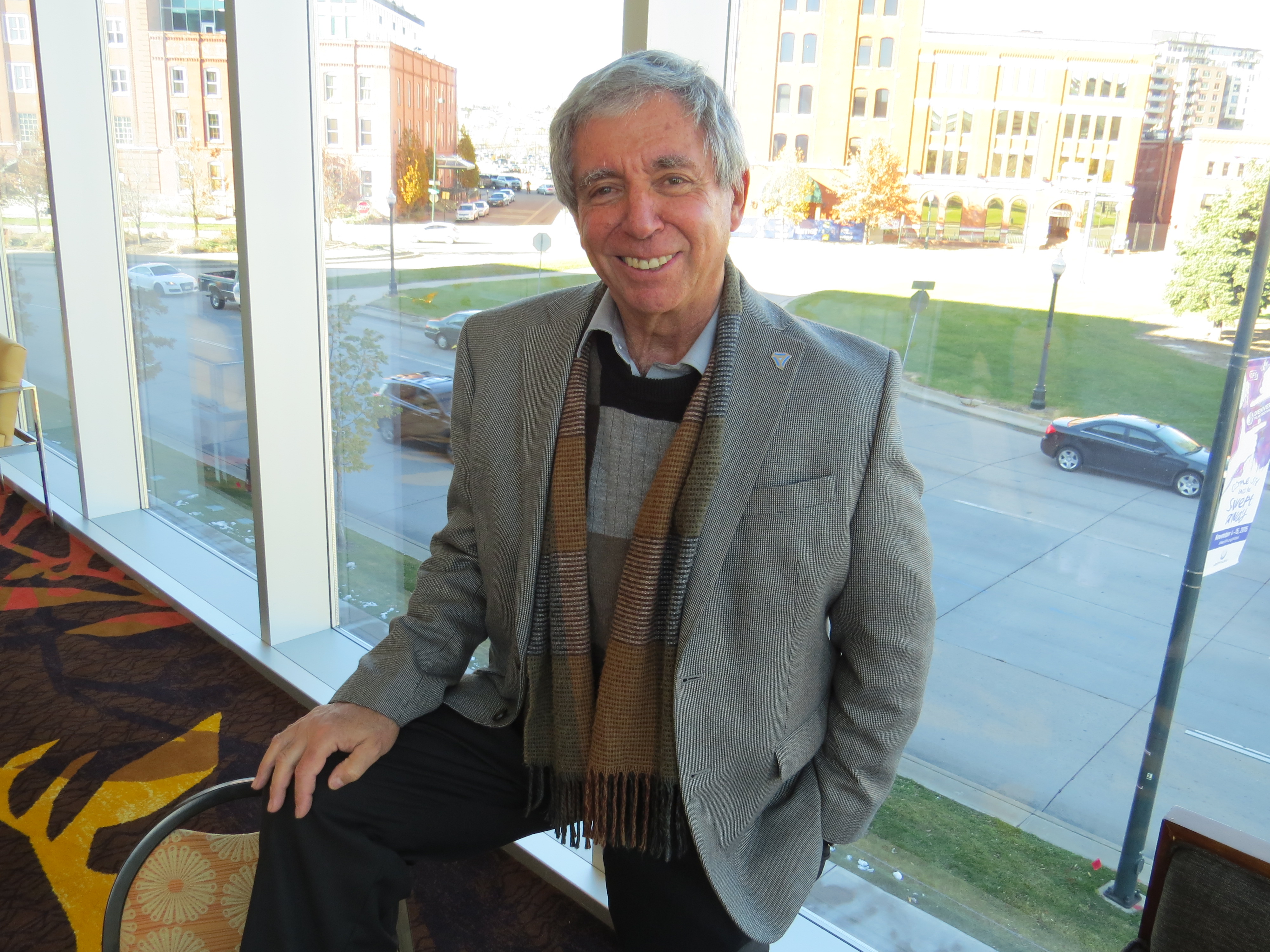
by Mark Smiley | Apr 25, 2016 | Main Articles
President Larry Ambrose Replaced By J.J. Niemann In 45 To 42 Vote
by Glen Richardson
The Denver Inter-Neighborhood Cooperation (“INC”) is the umbrella group of all the registered neighborhood associ ations and others. It has been one of the few official outlets for neighborhood groups unhappy with the high density developments overtaking Denver.
ations and others. It has been one of the few official outlets for neighborhood groups unhappy with the high density developments overtaking Denver.
The Annual Delegate Meeting was held on March 12, 2016. Neighborhood activist Dave Felice described the meeting as “a coup d’état by interests aligned with Mayor Michael B. Hancock’s agenda to develop and increase density at all costs.” Neighborhood champion Larry Ambrose, a law graduate and Metro State teacher was replaced as President with J.J. Niemann, whose job experience is apparently limited to modifying skateboards. He had been a loud supporter of the zoo gasification plant until that plan was terminated by the Zoo Board, much to the embarrassment of Niemann and similar supporters.
The seizure of control of INC was greatly facilitated by the sudden registration of various Business Improvement Districts as voting members of INC which allowed the developers to win the close vote.
Ambrose had been a thorn in the side of Mayor Hancock for years and was even the recipient of the largest number of write-in votes in last spring’s election in the history of the city notwithstanding the fact that Ambrose did not campaign or seek out votes. Felice indicated that “Ambrose irritated City Hall because he speaks truth to power . . . and [is a] tireless advocate for the well-being of Denver residents and the neighborhoods.”
The overthrow of Ambrose was orchestrated according to insiders by a troika of developer and mayor supporters — Joel Noble, a Denver Planning Board member; Andrew Sense, an ally of Denver City Councilman Albus Brooks; and Michael Henry, the only paid employee of Denver Board of Ethics. Niemann himself is considered by many to be an intellectually challenged front person for more powerful interests.
The Denver Planning Board is wholly appointed by the Denver Mayor. Under the leadership of Executive Director Brad Buchanan the Board and the Denver Planning Commission itself are considered by some as ethically suspect and little more than bureaucratic allies for the Mayor’s favored developers.
Noble is considered a leading apologist for the Denver Planning Board’s conduct, writing, for example, a guest editorial in The Denver Post on March 28, 2015. In the article he defended the appointment by Hancock real estate developers on a purportedly civilian Planning Board claiming the Board needed “diverse perspectives.” He was also appointed by the Mayor as the spokesperson for “Vision Zero Coalition” regarding traffic deaths. Noble is also the President of Curtis Park Neighbors considered by some as little more than a developer front group.
When Anna Jones ran with heavy developer and lobbyist support against Wayne New in District 10 (Cherry Creek) for Denver City Council many voters stated that her serving on the Denver Planning Board effectively disqualified her from ever holding public office.
Michael Henry is the only paid city employee of the Denver Ethics Board which has come under heavy criticism for virtually never finding an ethics violation regarding anyone in the Hancock administration. Political consultant Ellie Reynolds said of the Ethics Board that “it’s an Orwellian named entity whose principal purpose appears to excuse and validate the most unethical conduct imaginable.” Ethics Board members assert that their hands are tied by a weak and ineffective Ethics Code which city officials have no intention of ever substantively changing.
Henry effectively ran INC prior to Ambrose being elected in 2011. Ambrose took what was a somewhat somnolent organization and transformed it into a strong voice for neighborhoods. Henry was forced out when complaints began to arise noting his conflict of interest being a city em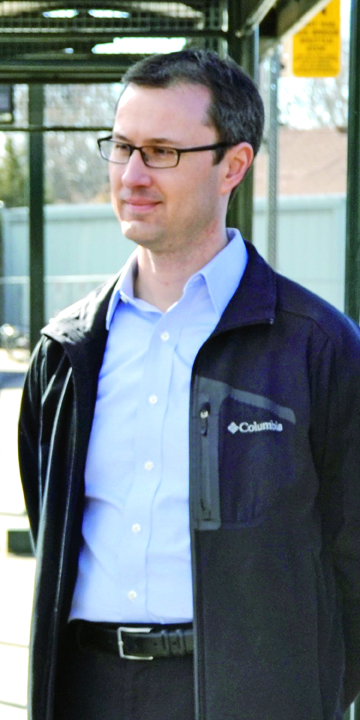 ployee controlling what was supposed to a neighborhood organization. Many expect Henry will now resume, at least in part, his influence over INC.
ployee controlling what was supposed to a neighborhood organization. Many expect Henry will now resume, at least in part, his influence over INC.
The last of the troika is Andy Sense, a somewhat shadowy figure. He has described himself as “President of the City Council District 9 Office” although no such position appears to exist, at least according to Councilman Brook’s office. The councilman is a close ally of Mayor Hancock and Brooks is believed to want to succeed Hancock as Mayor of Denver. In 2014, Brooks, apparently believing that existing neighborhood groups in his District were not sufficiently pro Hancock, he formed his own City Park Neighborhood Advisory Committee to which Sense was appointed.
When local neighborhood groups began opposition to the City Park gasification project, Sense, like Niemann, became a leading critic of the residents. In a letter to the Chronicle published in January of this year he called the opponents “extremists” and “un-neighborly” and said that INC under Ambrose was spreading “divisiveness” with “extreme resolutions.”
Sense, Niemann and other advocates for the gasification plant (including The Denver Post) were e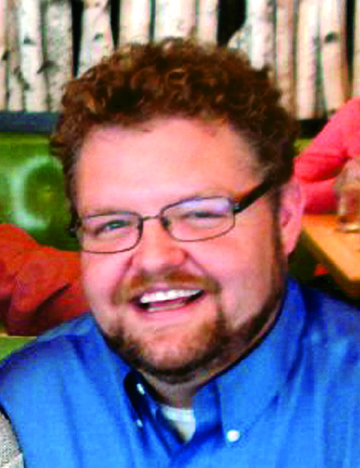 mbarrassed when the Zoo essentially acknowledged the critiques of the opponents by cancelling the plans for the plant adjoining City Park.
mbarrassed when the Zoo essentially acknowledged the critiques of the opponents by cancelling the plans for the plant adjoining City Park.
After the takeover INC passed a series of innocuous resolutions including one concerning the highly controversial Platte to Park Hill Stormwater Project saying the city’s decision should be based “on full study and meaningful neighborhood involvement.” The weak resolution was quickly ignored by the City.
The ouster of Ambrose and the pro-neighborhood advocates reminded many of Hancock orchestrating the removal of all the members of the Denver Parks Advisory Board who opposed his Hentzell Park open space giveaway. They were replaced by developer lobbyists including Marcus Pachner or longtime supporters of the Mayor such as “Happy”” Haynes’ sister, Khadija Haynes.
As for the future for INC many neighborhood groups and advocates are not sanguine. “All that will happen now is that INC will hold a worthless awards dinner and send out pro Administration propaganda pre-approved by the Mayor and his developer friends,” stated political consultant Ellie Reynolds.
As for Larry Ambrose he plans to take the Colorado Bar this summer and continue the fight for Denver neighborhoods even if INC is now little more than an adjunct of the Hancock administration. He plans to stay actively involved in the controversial Platte to Park Hill Stormwater Project by “keeping them honest, or more accurately, making them honest.”
Dave Felice notes that while some question whether INC will have any remaining relevance now that it is under Hancock’s control, the committees on Zoning and Parks retain strong neighborhood advocates.
Ambrose also thinks Niemann and the power brokers behind him like Noble will find that shoving all the neighborhood outrage back in the bottle will not be easy. “Not all of the delegates of INC will go quietly into the night. There are some real advocates for the neighborhoods who will be challenging for Noble and his buddies to try to shut up.”
Many citizens are actively beginning to advocate Ambrose to run for the Mayor’s office and he has not ruled out the possibility. He knows it will take money and the lobbyists like CRL Associates and Brownstein, Farber will dump huge sums into Hancock’s coffers. But the run of Bernie Sanders and his amazing success in raising money with small donations is encouraging to Ambrose. “You never know what the future may bring,” stated Ambrose.

 Some big changes may be on the way for the intersection at Arkansas and Colorado Boulevard.
Some big changes may be on the way for the intersection at Arkansas and Colorado Boulevard. to renovate the existing building. According to a financial comparison analysis conducted by CDOT and Jones Lang LaSalle in 2014, the total cost for renovation would be just over $16 million. The same analysis showed the total net cost over a 20-year period to renovate and maintain the Arkansas location would cost around $56 million.
to renovate the existing building. According to a financial comparison analysis conducted by CDOT and Jones Lang LaSalle in 2014, the total cost for renovation would be just over $16 million. The same analysis showed the total net cost over a 20-year period to renovate and maintain the Arkansas location would cost around $56 million.













